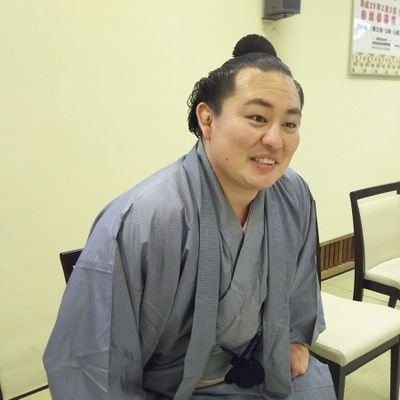The Rikishikai is an autonomous body composed of active professional sumo wrestlers, traditionally led by the yokozuna. It allows wrestlers to actively participate in the management and modernization of the sumo world, maintaining harmony between tradition and progress.
What Is the Rikishikai?
The Rikishikai is composed of active sekitori—wrestlers ranked in the Makuuchi and Jūryō divisions within the Japan Sumo Association. Regular meetings are held several times a year to discuss the direction of the sport, issues faced by wrestlers, and ways to improve living and training environments.
This body is not merely a discussion group. It represents the wrestlers’ self-governing efforts to improve the world of sumo from within. From young wrestlers to veterans, everyone can voice opinions equally, encouraging a culture of cooperation and responsibility.
| Item | Details |
|---|---|
| Members | Active sekitori (Makuuchi and Jūryō) |
| President | Yokozuna (by tradition) |
| Purpose | To communicate wrestlers’ opinions to the Sumo Association |
| Main Activities | Discussion, proposals, social and cultural outreach |
| Nature | An autonomous organization within the Association |
History and Background of the Rikishikai
The Rikishikai was created out of a desire to give wrestlers a voice in the management of the Sumo Association. In earlier times, key decisions were made solely by senior officials, and the opinions of active wrestlers were often overlooked. To correct this imbalance, the Rikishikai was founded as a forum where wrestlers could express concerns and ideas.
Since its establishment, it has played a key role in improving training environments, travel conditions during regional tours, and medical support systems. These initiatives have strengthened trust between wrestlers and the Association while enhancing the integrity and morale of the entire sport.
| Era | Key Developments |
|---|---|
| Mid-Showa Period | Establishment of the Rikishikai; formalized dialogue with the Association |
| Early Heisei Period | Implementation of training and touring improvements |
| Reiwa Era | Greater inclusion of young and foreign wrestlers’ perspectives |
Why the Yokozuna Serves as President
The yokozuna, as the highest-ranked wrestler, embodies not only athletic excellence but also honor, dignity, and leadership. Thus, it is traditional for the yokozuna to serve as president of the Rikishikai.
Having the yokozuna in this position lends weight and authority to the organization, encouraging younger wrestlers to speak freely. The yokozuna acts as a bridge between the wrestlers and the Sumo Association, representing their concerns and guiding the group with wisdom and integrity.
| Position | Role |
|---|---|
| President (Yokozuna) | Leadership, mediation, and representation before the Association |
| Vice President (Ōzeki, Sekiwake, etc.) | Support in organizing meetings and collecting opinions |
| Executive Members (Sekitori) | Communication of individual and regional issues |
Main Activities of the Rikishikai
The Rikishikai’s work revolves around sumo environment reform and social contribution.
Its first priority is to improve the daily and professional lives of wrestlers. Topics include lodging and meals during tournaments, injury prevention, and safety at training facilities. These practical issues are addressed directly to the Association, often resulting in concrete reforms.
In addition, the Rikishikai plays a leading role in community outreach. Members visit disaster-stricken areas, support welfare facilities, and hold sumo workshops at schools to promote cultural understanding and physical well-being.
| Activity Area | Description | Purpose |
|---|---|---|
| Environmental Reform | Review of training, dorms, and tour facilities | Ensuring health and safety |
| Social Contribution | Donations, community events, volunteer work | Building social connection |
| Education | School visits, sumo classes for children | Preserving and promoting tradition |
Relationship with the Japan Sumo Association
Although part of the Japan Sumo Association, the Rikishikai maintains an independent and representative role for active wrestlers. Proposals discussed during meetings are presented to the Association’s board, where they may influence policies and management decisions.
This system enables the Association to make more realistic, field-based decisions, improving communication between leadership and athletes. The Association, in turn, values the Rikishikai as a key partner in maintaining harmony within the sumo community.
The Social Significance of the Rikishikai
The Rikishikai plays a crucial role in balancing tradition and modernization within sumo. As Japan’s national sport, sumo carries deep cultural meaning, and the Rikishikai ensures that it adapts to changing times while preserving its essence.
With the rise of international wrestlers, the Rikishikai also facilitates cross-cultural support and guidance, such as Japanese language assistance and lifestyle adaptation. Its activities help foreign wrestlers integrate smoothly into Japan’s traditional sporting environment.
| Field | Activity | Social Impact |
|---|---|---|
| International Exchange | Support for foreign wrestlers, overseas sumo events | Promotes global understanding of Japanese culture |
| Cultural Heritage | Preservation of traditional training and etiquette | Sustains Japan’s national identity |
| Community Engagement | Local tours and regional interaction | Strengthens community ties through sumo |
Future Prospects of the Rikishikai
Looking ahead, the Rikishikai aims to incorporate more young wrestlers’ voices. As generational change continues, new ideas and perspectives are expected to shape the next phase of sumo’s development.
In addition, with growing international interest, the Rikishikai’s role as a cultural ambassador is becoming more prominent. Through global events and educational outreach, it will continue to share the “spirit of sumo” with the world.
Conclusion
The Rikishikai represents wrestlers’ commitment to shaping the future of sumo through unity, responsibility, and cultural pride. Led by the yokozuna, it embodies the balance between tradition and progress, working to enhance living conditions, strengthen social ties, and expand international appreciation of sumo.
Beyond the ring, its efforts to connect wrestlers with fans and communities illustrate that sumo is not only a sport but a living cultural legacy. The Rikishikai continues to guide the sport toward a new era—one where sumo is not only watched, but shared, experienced, and celebrated by all.





コメント